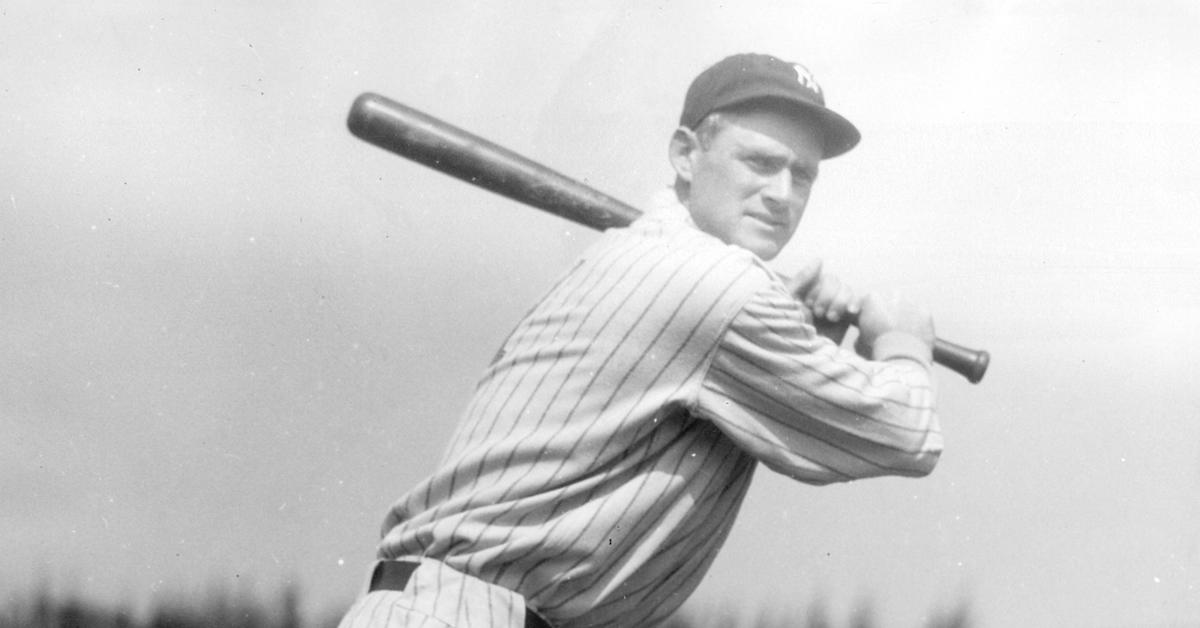Every Friday, we will be taking a look back at the career of a critical player in New York Yankees history that doesn’t quite get the recognition they deserve. When looking at the storied history of the Yankees names like BabeRuth, Mickey Mantle and Derek Jeter quickly come to mind. Today, we will be looking at those players who played a critical role. Simply put, without these individuals, the Yankees wouldn’t have been the Yankees.
You can find the previous editions here:
Elston Howard
Chris Chambliss
Mario Duncan and Luis Sojo
Frank Crosetti
Graig Nettles
Roy White
Center field has simply been one of the best positions in Yankees history. From Joe DiMaggio and Mickey Mantle to Bernie Williams, Yankees center fielders have consistently been impactful players in the organization. Today, we will be heading back to the Babe Ruth era and looking at the man who was the table setter of Murders Row, the Kentucky General: Earle Combs.
Early Life
Combs was born on May 14, 1899 in Pebworth, Ky. Not much is known about Combs until 1917 when he entered Eastern Kentucky State Normal School, which prepared Combs to become a school-teacher in a one-room schoolhouse. After performing very well in a student/faculty game he joined the school’s baseball team and hit .591.
After graduating, Combs returned to the Pebworth area and taught at local schools while playing for a local coal mining team. Eventually, he drew the attention of the Louisville Colonels manager, Joe McCarthy. Combs struggled early, but he eventually finished the 1923 season hitting .380 while playing stellar defense in center field.
Kentucky to the Bronx
In 1924, Combs’ contract was purchased by the New York Yankees for $50,000. In his first season in MLB, Combs hit an absurd .400 until he broke his ankle on June 15 which ended his season. The following season, Combs moved to the leadoff spot, a position that he would hold for the remainder of his career.
In 1925 during his first full MLB season, Combs hit .342. In 1927, the New York Yankees won their second World Series championship and started an incredible streak of postseaon success. From 1925 through 1933, Combs averaged just over 16 triples and 120 runs scored as the table-setter for one of the most potent lineups in MLB history. Combs would also be joined in the Bronx by former manager Joe McCarthy in 1931.
Unfortunately, Combs may be best known for a 1934 accident that almost ended his life. On a very hot July day in St. Louis, Combs was tracking a ball when he ran full speed into the outfield wall, breaking his skull, shoulder and badly damaging his knee. Combs would spend the next few months in a local hospital as he recovered from his serious injuries.
Combs tried to come back the following season but another injury and the emergence on Joe DiMaggio in center led to Combs calling it a career in 1935. For his career, Combs hit .325 while averaging 71 walks and only 35 strikeouts a season, with three World Series championships. In 16 World Series games, he hit .350 while always batting leadoff.
Post Playing Days
Combs would return to the Yankees the next season in a coaching role, where his main responsibility was teaching Joe DiMaggio how to play center. He remained with the Yankees for the next two decades, winning six more championships before making coaching stops with the St. Louis Browns, Red Sox and Phillies.
Combs finished his days in baseball following the 1954 season, and returned to a 400-acre farm. He served as Kentucky’s state banking commissioner and on the Board of Regents with the Eastern Normal School. Eventually, he would be inducted into MLB’s Hall of Fame in 1970
Combs passed away after a long battle with an illness in 1976 at the age of 77.




